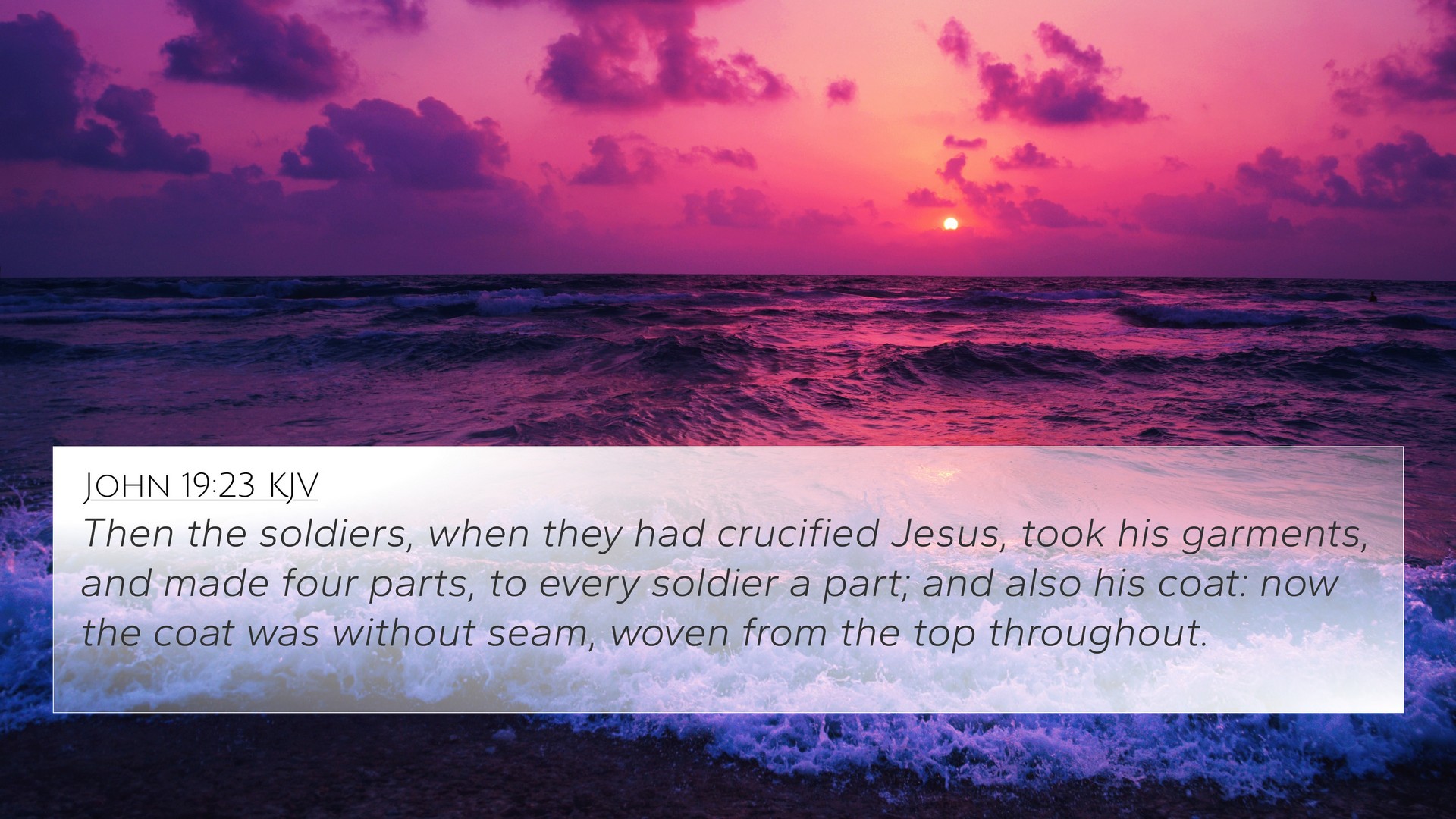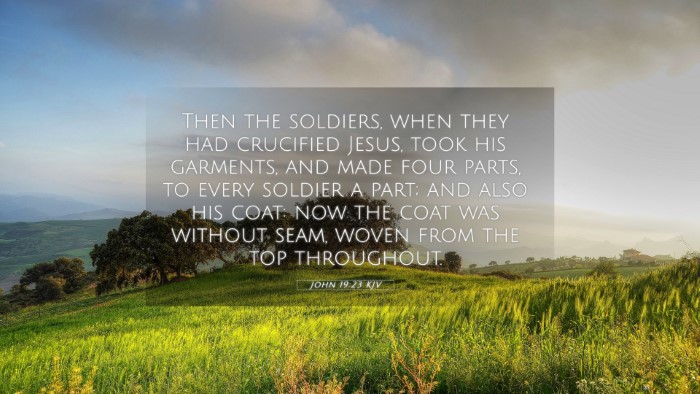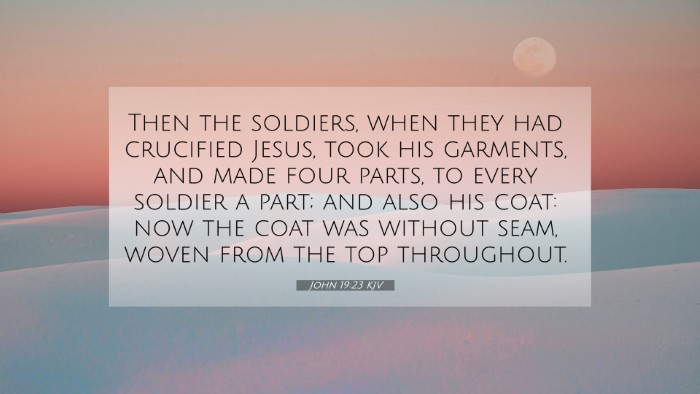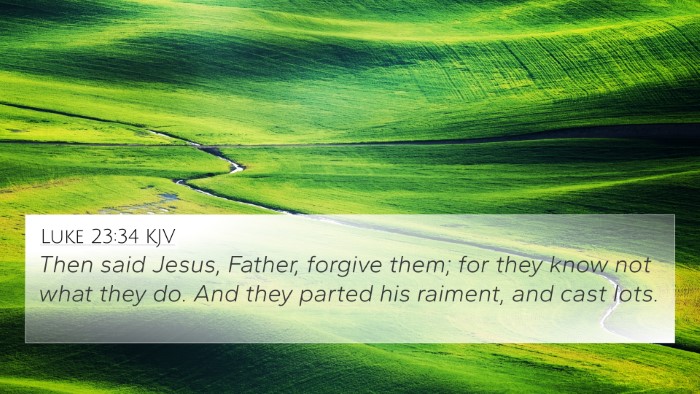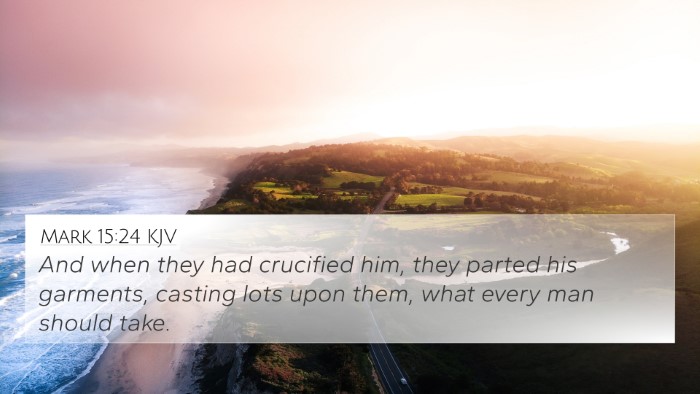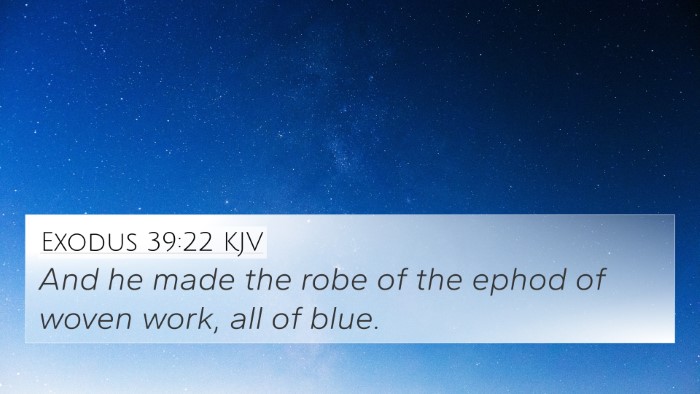John 19:23 states: "Then the soldiers, when they had crucified Jesus, took His garments and made four parts, to each soldier a part, and also the tunic. Now the tunic was without seam, woven from the top in one piece."
This verse presents a significant moment in the crucifixion narrative, highlighting not only the physical act of crucifixion but also the interaction of the soldiers with Jesus' garments. By examining this verse through various biblical commentaries, we can uncover deeper meanings and connections.
Interpretation and Commentary
According to Matthew Henry, this passage emphasizes the fulfillment of Old Testament prophecy, particularly Psalm 22:18, which states, "They divide My garments among them, and for My clothing, they cast lots." This act signifies the humiliation and abandonment of Christ during His suffering.
Albert Barnes provides insight into the significance of the "tunic" or "seamless robe." This garment symbolizes the unity of Christ’s nature—His divinity and humanity interwoven, serving as a representation of the church. The soldiers' act of dividing His garments contrasts sharply with the wholeness of His Atonement.
Adam Clarke notes the cruel indifference of the soldiers in this act. Instead of reflecting on the significance of their actions, they treat Jesus’ suffering as an opportunity for personal gain. This reflects a broader theme about human nature in the face of divine struggle.
Key Themes
- The Fulfillment of Prophecy: In Jesus’ crucifixion, we see the prophecy of Psalm 22 being realized.
- The Nature of Jesus: The seamless robe symbolizes the integration of His divine and human nature.
- Human Indifference: The soldiers' actions highlight a common human tendency to exploit tragedy for personal benefit.
Bible Verse Cross-References
Understanding John 19:23 in context becomes richer when related to other scripture. Here are several significant cross-references:
- Psalm 22:18: "They divide My garments among them, and for My clothing they cast lots."
- Matthew 27:35: "And they crucified Him and divided His garments, casting lots." This shows the continuity of the narrative across the Gospels.
- Mark 15:24: "And when they had crucified Him, they divided His garments, casting lots for them to determine what every man should take."
- Luke 23:34: "Then Jesus said, 'Father, forgive them, for they do not know what they do.' And they divided His garments and cast lots." This illustrates Jesus' compassion amidst suffering.
- John 19:24: "They said therefore among themselves, 'Let us not tear it, but cast lots for it, whose it shall be.'" This further specifies the soldiers' decisions regarding Jesus' garments.
- John 10:11: "I am the good shepherd. The good shepherd gives His life for the sheep." Highlighting the selflessness of Christ against the backdrop of the soldiers' actions.
- Revelation 5:9: "...For You were slain, and have redeemed us to God by Your blood out of every tribe and tongue and people and nation..." underscoring the sacrificial aspect of Jesus’ death.
Connecting Themes Across Scriptures
The crucifixion narrative in John 19:23 exhibits relationships with scriptures throughout the Bible that collectively offer a more profound understanding of Jesus' sacrifice and the divine plan of redemption. By engaging in Comparative Bible Verse Analysis, we can link various insights:
-
Covenantal Fulfillment: The division of garments operationalizes the necessity of sacrifice as established in the Old Testament.
-
Humanity's Response to Divine Will: The soldiers’ actions mirror mankind's ongoing struggle with recognizing divine authority and grace.
-
Symbolism of Clothing in Scripture: Garments are often used to symbolize righteousness and sin (Isaiah 61:10; Revelation 3:5). The torn clothing contrasts sharply with the seamless, symbolizing Christ's unblemished righteousness.
Thematic Connections
Through this exploration of John 19:23, readers can see how themes of suffering, prophecy, and humanity's brokenness resonate throughout scripture. It provides a bridge to understanding the purpose of Christ's suffering and the theological implications for believers today.
To fully grasp the depth of biblical teachings, one can utilize tools for Bible cross-referencing and engage in cross-reference Bible studies. These practices allow one to explore the intricate tapestry of connections between biblical texts, revealing the inter-Biblical dialogue that enriches understanding.
Engaging with scripture through the lens of cross-referencing, one can ask questions such as “What verses are related to John 19:23?” and seek answers in the extensive network of biblical themes and narratives that intertwine.
